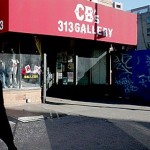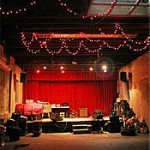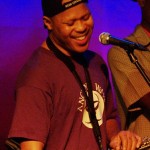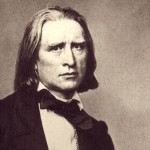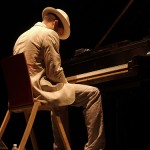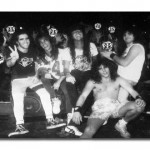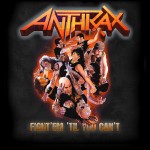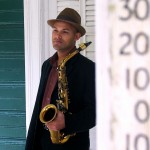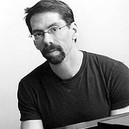 It’s a Sunday afternoon in August, and I’m at the Howland Cultural Center in Beacon, New York, to hear the Kazzrie Jaxen quartet. I’m here because Kazzrie is here, and because my neighbor, a pianist and friend of Kazzrie’s, invited me. In a broader sense, I’m here because I am new to the peaceable kingdoms of the Hudson Valley, and I am still trying to find my moorings amid the upstate exiles. In the City you get used to the weight of people, smog, and noise. It settles on you, over time. Here, I’m like a man walking on the moon: every step threatens to catapult me into space, and I look around in vain for someone or something to hold me down.
It’s a Sunday afternoon in August, and I’m at the Howland Cultural Center in Beacon, New York, to hear the Kazzrie Jaxen quartet. I’m here because Kazzrie is here, and because my neighbor, a pianist and friend of Kazzrie’s, invited me. In a broader sense, I’m here because I am new to the peaceable kingdoms of the Hudson Valley, and I am still trying to find my moorings amid the upstate exiles. In the City you get used to the weight of people, smog, and noise. It settles on you, over time. Here, I’m like a man walking on the moon: every step threatens to catapult me into space, and I look around in vain for someone or something to hold me down.
The Howland Center is a tall, airy space with a churchy feel. It used to be the town library, until 1976, when the collection outgrew its confines, the books were (re)moved, and the building joined the National Historical Registry. The shelves have been taken down, but the cabinets remain, the numbers still stenciled on them, and black and white pictures of the town-as-it-was hang above the spaces where the books used to be. Instead of rectangular reading tables and card catalogs, there are round folding four-tops covered with plastic. There is fruit, cheese, wine, brownies, kids. A metal balcony encircles the room ten feet above, with more empty numbered cabinets along the walls and four lights suspended from the grillwork. A big grandfather clock, its brass, lute-shaped pendulum stilled, fails to measure the time.
The musicians put their things on top of the cabinets: instrument cases, a red fabric cooler, a few bottles of water. Jaxen, who plays piano, stops by our table to say a brief, warm hello. She is blond, nimble, radiant. Sinewy, though there is something wispy about her, too. Charlie Krachy, standing a few feet behind her with his tenor already hanging from his neck, is grey, plodding, down to earth—her complement in every way. Together with the rest of the band—Don Messina on bass, Bill Chattin on drums—Charlie will spend the next hour holding on to the sleeves of Kazzrie’s blouse and the hem of Kazzrie’s skirt, as she refuses to let that great ballast of the instrument world hold her down, and threatens to float up and away, like one of those newlyweds in a Chagall painting.
*
I had the chance to hear Kazzrie only once before, in an apartment in Morningside, on a Sunday afternoon not so different from this one. The musicians who played that day, and the vast majority of those in the audience, were part of a musical collective that seems to have grown up around the pianist and educator Connie Crothers. It was a trio of violin, piano and clarinet, playing freely improvised music. In such a setting, there is no agreement about structure or melody beforehand, and there are no standards, at least in the jazz sense of that term. Somebody starts to blow, or strum, or pluck, or whatever, and the musicians go wherever the spirit of the moment takes them, and the jam lasts as long as that spirit inhabits them. Then they pause, and start again. It is remarkably beautiful to watch as well as to listen to.
When the “set” was over, there was a break to eat and drink and chat. Then the real jam began, real because it was yet more free. Different people got up to play as the mood struck them, like Quakers moved to speak. Maybe what was most beautiful was the humility with which playing was approached. There was not that sense you sometimes gets at late-night jams, where one player after another wants to muscle in, take the limelight for a few bars, be heard. Here, everybody knew everybody else, or almost, and pretty much everybody had played together at one time or another. There was much hesitation and politeness; a smile and nod across the room, like you might ask a stranger to dance; the sudden leaping out of a chair, because nobody else had; the desire to share something. Of course, almost everybody there was a musician, they had all brought their instruments with them, or just themselves. It was even a little eerie to find that everyone else in the room was touched with the capacity to create ex nihilo, as much as it would be to find that they could bend spoons without touching them, or read each other’s minds. And there was the feeling that they all know each other on a level more intimate than I could ever know them, or perhaps anyone; and this produced a combination of admiration, envy, and unease. If this were a Polanski movie, I thought, they would be a coven. I even began to suspect that the reason each of them could improvise in this way must have something to do with the rest of them being present; that they create a sort of magic circle in which such things can happen. That they were all holding the edge of an invisible net, which they cast collectively into the air, to catch the bits of melodies floating around like pollen. As for the music, it is as ephemeral as the dappled bit of sunlight I noticed falling on the carpet when I glanced toward the window late that afternoon; it is music of that Sunday, and no other. One is not leaving a legacy, but living a moment. And so it is all the more necessary just to play. Maybe the feeling of humility comes partly from this.
Kazzrie was not part of the original trio that day. She flitted up to the piano during the jam two or three times, once dragging my neighbor along with her for a duet at the same keyboard. I remember the immense sound she got out of that piano, for such a wisp of person. But then there was a special radiance about her, an energy far greater than her size. Walking home with my neighbor after the gig, I was reluctant to single out any one performance, the whole afternoon had been so enjoyable, the collective musicianship so impressive. We have a running joke between us, my neighbor and I. Both of us have had the experience of sharing music we love with friends, only to be disappointed by a lukewarm or patronizing response. So now, when we talk about music, no matter how much we like something, all we will ever commit to saying is that it is interesting. “Was it interesting?” “Oh, yes. Definitely interesting. I have something you might find interesting as well.” “Great, I’d love to hear it. I like interesting music.” In this sort of exchange, you depend on the off smile or wrinkle of an eye to say more than words.
But when we talked about Kazzrie that afternoon, it was in tones of reverent, gushing appreciation. We were suddenly comfortable dropping our masks; something about the music demanded it. It only lasted a few moments. Then we returned to our more generally laconic, dispassionate discussion of music, and then we moved on to other subjects.
*
In a way, the Beacon set was the antithesis of that intimate gathering in Morningside. Before the quartet began, Kazzrie told the audience they were going to evoke the days of Young and Holiday, as well as play some more free improvisation. The set that afternoon was definitely tilted toward the former. The nine or ten songs were all standards, with the free excursions relegated to digressions at the ends of tunes. With the exception of two ballads, and to a lesser extent the songs Kazzrie sang in her pleasant, Holiday-inflected voice (“All of Me” and “I Ain’t Foolin’”), the selections were identically imagined and approached: the same forward momentum, hippity-hop bounce, arrangement, and order of solos. “Softly, as in a Morning Sunrise,” which appeared early in the set, is such a delicate, haunting tune; I’ve always thought it carried faint suggestions of conspiracy, of betrayal. But the band played it with the same foot-tapping energy as they did everything else. This wasn’t so much sunup as high noon; the melody lost all shadow.
Was it the audience? I wondered. From the Q&A after the set, it was clear that at least a few people there were new to jazz. Maybe the quartet was afraid of alienating them.
I don’t think so.* While Charlie and the rest of the band did indeed evoke the days of Holiday and Young—and Young is not a bad touchstone for Charlie’s warm, sumptuous tone and wonderful sense of melody, both of which really shone on the ballads, and which the Howland space served to amplify—Kazzrie, singing excepted, did not. Something I learned from one of my jazz guitar teachers many years ago: you can swing your way through just about anything. (He demonstrated this by playing an uptempo solo with as many “wrong” notes as he could squeeze in.) In the middle of a heavy swing, an excursion into dissonance or even sheer noise is passed over almost unnoticed by many listeners—even by educated listeners who have not had much exposure to jazz. A steady rhythm allows us to box in and measure such transgressions; it reinforces the sense that they are temporary, regulated. A good beat can square even the most crooked line. The early free jazz players knew this—compare early Dolphy records to Out to Lunch, or Cecil Taylor’s Love for Sale and Conquistador!, or Coleman’s Free Jazz to AACM records from the mid ‘60s. For the average listener, there is something much more transgressive about the bassist and drummer dismounting and tramping off into the meadows to screw around than in even the most outlandish melodies or harmonies. It is the difference between walking into a room and frowning at the décor, and having the rug pulled out from under you.
It wasn’t just Holiday and Young, then, but early Cecil Taylor, that was evoked in me: that time in Taylor’s career when the piano worked like so many IEDs, blasting the rest of the band, and the whole musical experience, off kilter—“Excursion on a Wobbly Rail,” indeed. Like my jazz guitar teacher, Kazzrie could swing when she wanted to, but delighted in getting the notes all wrong; and, like Taylor, comping or soloing, she delighted in throwing rhythmic and harmonic curve balls while the rest of the band swung away, balls that (I have the feeling) whizzed right by many of the foot-tappers in the audience.
If Charlie’s big, huggable sound was all about pleasure, Kazzrie’s was bliss. There was something almost haughty about her, sitting sidesaddle at the piano, her shoulders hunching and relaxing, her mouth occasionally moving. She is almost too big a presence; she is swept away from the moment she sits down. And the way she smiled at that keyboard! Yet, I never got the sense, as is sometimes the case when such different musicians sit in together, that she was off in her own world. Her desire to float did not mean she was leaving the band, but rather that she was finding her own ways to approach them, and the music (cf. her bizarre substitutions on “All the Things You Are”). Comping, she was always listening, prompting, teasing the other players—particularly Charlie, whom she spent the hour scampering after while he soloed, chasing up and down scales and throwing pie-in-the-face chords at. And didn’t Charlie take it all not only in good humor, but with more than a little love and respect? For he never knew, when she went to the top of the keyboard, whether she was going to splash around in the shallow pool of those high keys, or turn them into harp-strings, purling around his tenor. And if she went to the bottom, he didn’t know if those octave runs up from the rumbling depths of the keyboard were going to sound like a Chopin etude or a boogie-woogie … with a dash of Richard Strauss’s bass strings thrown in. She might start a chorus with a single note, and slowly build outwards into a thicket of chord, modifying the rhythm as she went, until Charlie’s tenor, caught up in that beautiful dream, had to hack its way out of the morass of harmony. And then she might climb the keyboard with that same idea, maybe using it to thread her way into a solo, holding onto the tatters of the original idea to create seams. For there was always continuity, the remarkable sense that the concepts on this wide, weird palette come to her fully-formed. There is little, I imagine, she can’t do with a piano, little to which she can’t make it bend, like those spoons, back in that apartment in Morningside.
Did Kazzrie lie to us? Maybe a little. Maybe unintentionally. Maybe just not the whole truth. There was that bit of Holiday in her voice, and Young in Charlie’s horn. And she did say they were going to go a bit … out. Only she was never in. And so there was a subversive air to the whole performance, as if she wanted to plant bad seeds in this green audience by smuggling all that fabulous chaos and dissonance into a straight, sincere, swinging jazz set, smiling the whole way through, as if to say, “Who, me? I didn’t do it!” My guitar teacher warned me about people like you, lady. She was, finally, impossible to resist: she is so sunny and untroubled, so goddamn sure of herself, so certain that whatever she plays is going to win you over, so poised, and so clearly transported by the joy of making music, that if you were to tell her that her playing was, well, a little unorthodox, she would look at you like you were crazy.
*
It’s the same story as everywhere else. They used to make things here. Things you could touch. Hats, apparently. Lots of hats. The factories closed down in the ‘70s, right when they were moving all those books. Now they’re lofts, and the library is a façade. It’s all widgets and MacGuffins. When this sort of thing happened in SoHo, and Williamsburg, at least there was the rest of the City to ground them, like stones around a hot-air balloon. I mean, some neighborhoods still have metal trash cans, and people live in the buildings where they were born and raised. Or they come from faraway lands to squat, old new people without a pot to piss in, as they say. But here? They’re building a hotel and conference center on the river. Same as everywhere. Beacon just did it better, stronger, faster. Dia. Noche.
In the bathroom of this library without books, there is a picture of a chicken. Music, echoing in the spaces where books used to be. Presence, filling the space left behind by representation, twice removed. This is what I am thinking, staring at that picture of the chicken hanging over the toilet.
Maybe it was the rest of the band who were living a dream: the quaint beauty of the old country, the last century, jazz as it used to be, when the men worked on the waterfront or in the factories, and many of the women, too, and they met on dancefloors or smoky pubs, when the boom was taking off and the bomb was so real it made every moment precious. Maybe it was Kazzrie, with her big piano and her big sound, and her sound, and her sound that was nothing like theirs, nothing like anything but itself, no matter how much I try to find musical stones to pin it, who was holding the rest of them down; Kazzrie they depended on to stop them from floating away into some dream of a former time that wasn’t coming back. Kazzrie who kept the whole thing anchored in the present, who said, simply, You are here, like those maps in malls and museums. I didn’t have to worry about pictures of chickens or libraries without books, or even the fact that I’d moved so far out that the City was a faint glimmer and tug in space, a picture from Voyager, because I was a satellite of other, nearer bodies, and Kazzrie was here with her big piano to ground me in the living present.
* Another reason I don’t think so: I’ve attended other concerts by musicians in the same collective (perhaps not the right word; “New Artists” will do, I guess, because many of them have recorded for the small, independent label of this name) just as standards-driven as this one, and others made up entirely of originals, and yet others tending toward the free improv of that afternoon in Morningside. They are an impressively ecumenical bunch; I never got the impression anyone would get called a fascist for playing the tonic triad. For these musicians, “free improv” does not necessarily mean painting on an exploding canvas. From what I have witnessed, they often seem more interested in finding consonances and erecting structures, however temporary or strange, with dissonance reserved for shade and ornament, like vines over a trestle, than in creating the esctatic maelstroms associated (a little too facilely) with free jazz.

